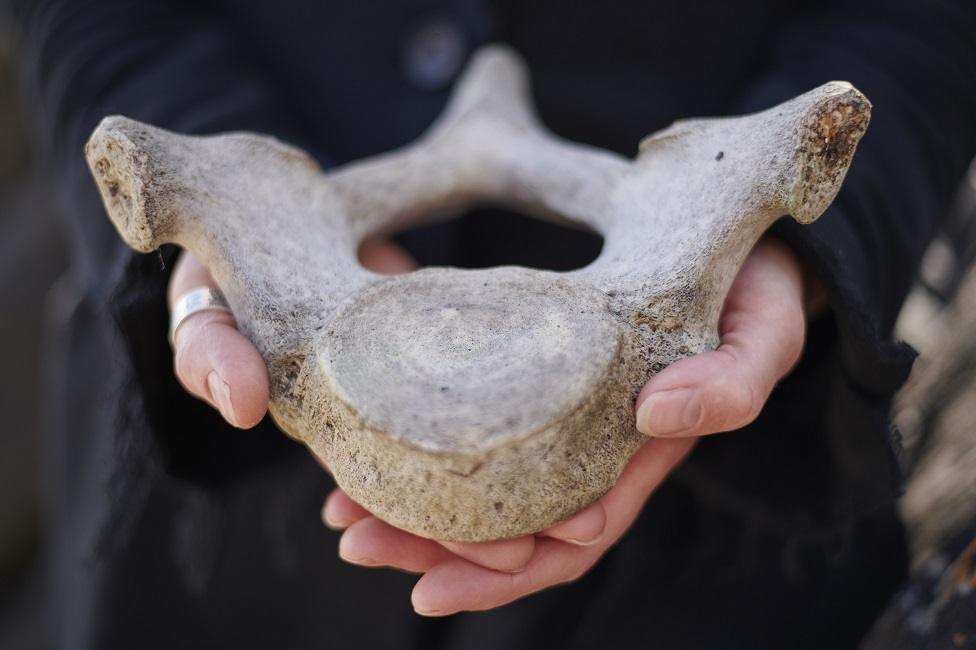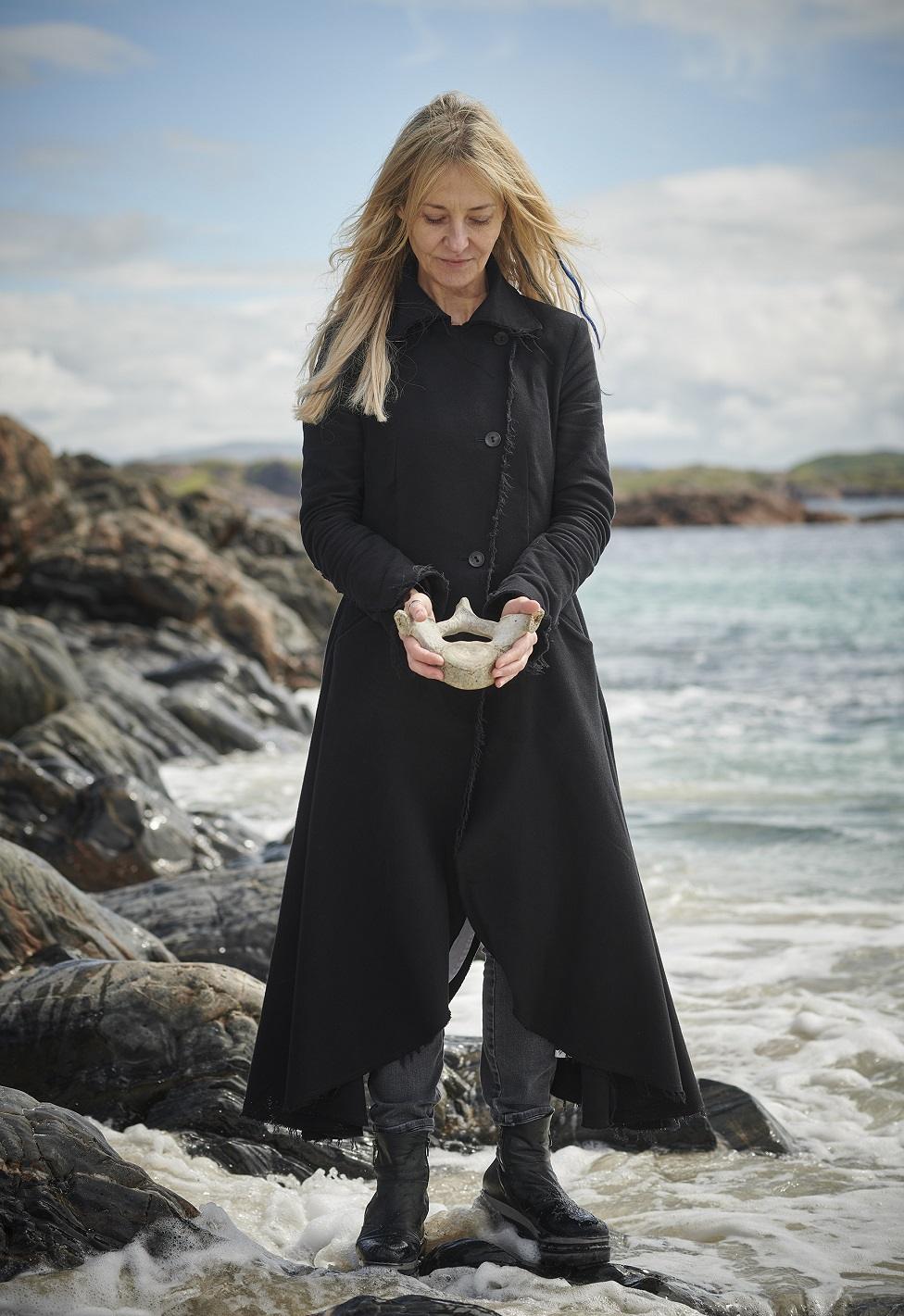New exhibition examines whales and military sonar
- Image source, Mhairi Killin

Image caption, Iona-based artist Mhairi Killin, holding a piece of whale bone, has put together a new arts exhibition exploring whether military sonar poses a risk to cetaceans.
1 of 2
At a glance
A new multi-media exhibition involving art, poetry and sound explores whether military sonar poses a risk to marine life.
The deaths of Cuvier's beaked whales in 2018 was one of the reasons behind On Sonorous Seas.
Iona-based artist Mhairi Killin collected data at sea during a military exercise last year for the exhibition.
The Royal Navy, which was involved in the exercise, said it took its responsibilities to the environment very seriously.
- Published
A new arts exhibition explores whether military sonar poses a threat to marine life.
In 2018, large numbers of deep-diving Cuvier's beaked whales washed up dead on Scottish and Irish shores.
Military activity in the Atlantic was one of the possible causes investigated by experts.
Artist Mhairi Killin's island home, Iona, was among the Hebridean isles where the dead whales were found.
Her new multi-media work, On Sonorous Seas, includes sound and visual data she collected with help from a scientist during an 11-day expedition with the Hebridean Whale and Dolphin Trust off Scotland's north and west coasts in May last year.
At the time, the trust was shadowing the UK-led Nato exercise Joint Warrior, one of Europe's largest war-fighting training events.
The exhibition, taking place at Mull's An Tobar arts venue next month, will also feature the work of other artists, a poet, a musician and performers.
The Royal Navy, which is heavily involved in the running of Joint Warrior said it took its responsibilities to the environment very seriously.
A spokeswoman added: "The Ministry of Defence has funded research into the use of active sonar and is engaged with the maritime community, increasing the understanding and regulation of sound-producing activities."
